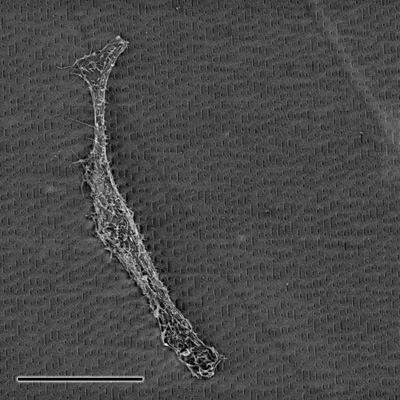|
The human genome is encoded by 3 billion base pairs of DNA. A base pair is like a computer bit,
only there are four of them (A, T, G, and C) instead of two (1 and 0). So, it would take
two computer bits to record one base pair (00=A, 11=T, 10=G, 01=C). If we recorded the
human genome as bits instead of base pairs, it would take 6 billion bits. This translates
into about 715 megabytes. That's more than a CD can hold!
Nearly every cell in the human
body contains this genome, and there are about 10 trillion cells in the body. The entire
genome is crammed into the nucleus of each cell, which is only 5 micrometers (0.005mm) in
diameter. The best electronics still don't even come close to what nature can do.
 |
|
This is a picture I took with an electron microscope of a human cell on an America
Online CD I peeled apart. A CD can hold 5.5 billion of these dots and dashes that encode
the 1's and 0's of digital data. This HeLa
cell not only contains as much information as a CD, but it can
also decode and execute its instructions, similar to what your computer does with a CD.
(Scale Bar 30 microns)
|
|
